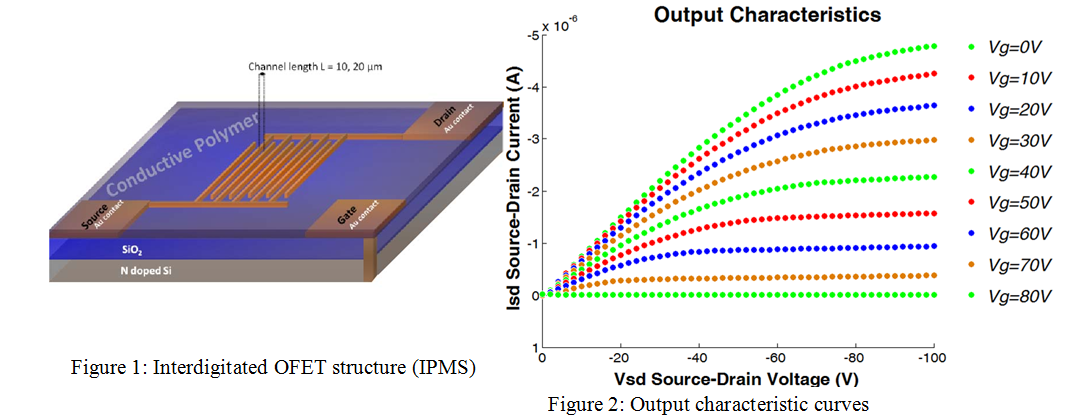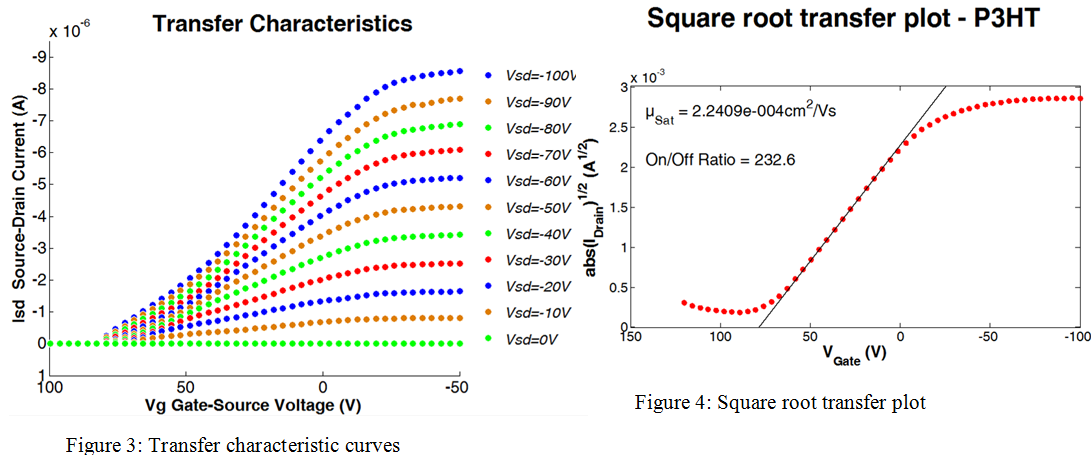Electrical Properties and Performances of Organic Field Effect Transistors
The increasing interest in conjugated polymers is due to the low cost processing methods and their high electrical conductivity. The main industrial applications of conjugated polymers are in organic field effect transistors (OFETs), organic light emitting diodes (OLEDs), organic solar cells etc. Accurate and reproducible characterisation of the electrical performances of organic semiconductor materials is a crucial point for comparison of different properties and their improvement [1].
To extract electrical characteristics of different conjugated polymers, interdigitated bottom contact OFET structures (Fig. 1) with 10 and 20 µm channel length are used (Fraunhofer Institute for Photonic Microsystems IPMS, Dresden). Main OFET characteristics are mobility, on/off ratio and threshold voltage [1]. Output curves and transfer curves are two types of measurements that are necessary to extract these parameters. The output curve is the plot of the drain current as a function of drain voltage for different gate voltages. The output curve reveals the FET like behaviour of the device [2] (Fig. 2).
In contrast, the transfer curves are the plot of drain current as a function of gate voltage for different drain voltages (Fig. 3). From the transfer curves the mobility is extracted in two different regimes: linear regime and saturation regime.
The characterisation parameters in saturation regime are obtained by plotting the square root of saturation current as a function of gate voltage (Fig. 4). The mobility is obtained from the slope of the fitted line to the square root plot. The mobility of spin coated poly(3-hexylthiophene) (P3HT) film is appears to be in order of 10-4 cm2/Vs and for drop cast film is in order of 10-3 cm2/Vs. The performances of different materials are characterised under ambient conditions.
Literature
- Braga D. and Horowitz G., 2009: High-Performance Organic Field-Effect Transistors, Advanced Materials, Volume 21, Issue 14-15, pages 1473–1486, April 20, 2009
- IEEE, 2008: IEEE Standard for Test Methods for the Characterization of Organic Transistors and Materials, The Institute of Electrical and Electronics Engineers (IEEE).

